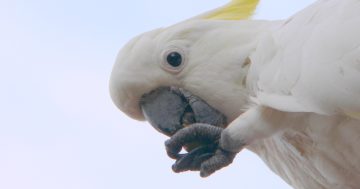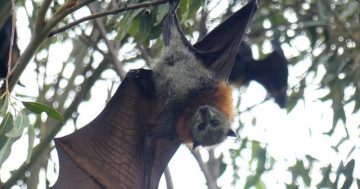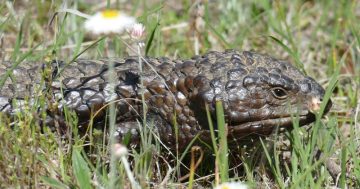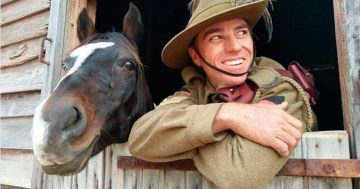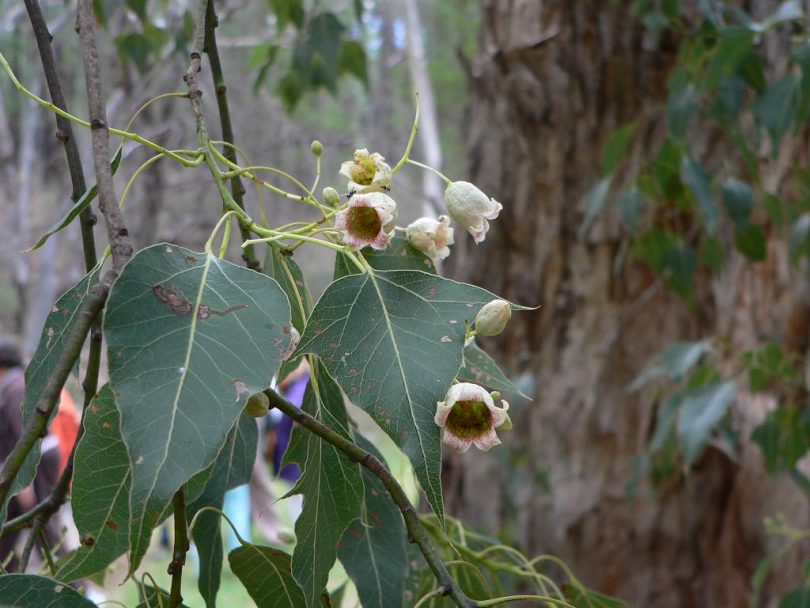
Kurrajong flowers and mature leaves. Photo: Ian Fraser.
I liked kurrajongs before I ever came east and saw them. Like generations of Australian children, I grew up with May Gibbs’ Snugglepot and Cuddlepie, which featured, among so many bush curiosities, kurrajong seedpod boats.
I was rapt when I first held one in my adult hand – quite likely on Mount Majura, though I can’t be sure – and was reluctant to put it down again.
A kurrajong is a delightful tree with voluptuous pale smooth bark and a dense canopy of soft bright glossy green leaves that shine in the breeze and sunshine. (Their Latin species name means ‘poplar-like’, but I think that greatly understates their beauty.) The young leaves have three branches, like a kangaroo’s foot, but they form a heart shape as they mature.
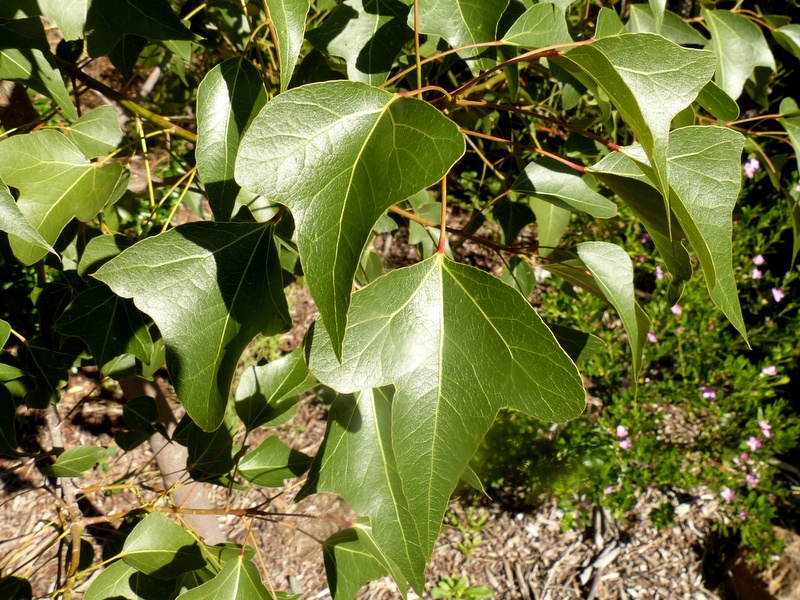
Immature Kurrajong leaves, with three prongs. Photo: Ian Fraser.
I mentioned Mount Majura because there are groves of them there, but these date only from a century ago. In 1919 and 1920, Thomas Weston, charged with repairing the denuded landscape that was to be the new capital site, planted 20,000 kurrajong seedlings on the largely bare slopes of Majura from the government nursery that he founded.
The unanswerable question is whether he was replacing a species he knew to have grown there – it’s not at all unlikely that they grew there originally.
Kurrajongs are scattered on the rocky hills of Canberra Nature Park, especially south of Lake Burley Griffin, and into the dry slopes of the southern ACT ranges.
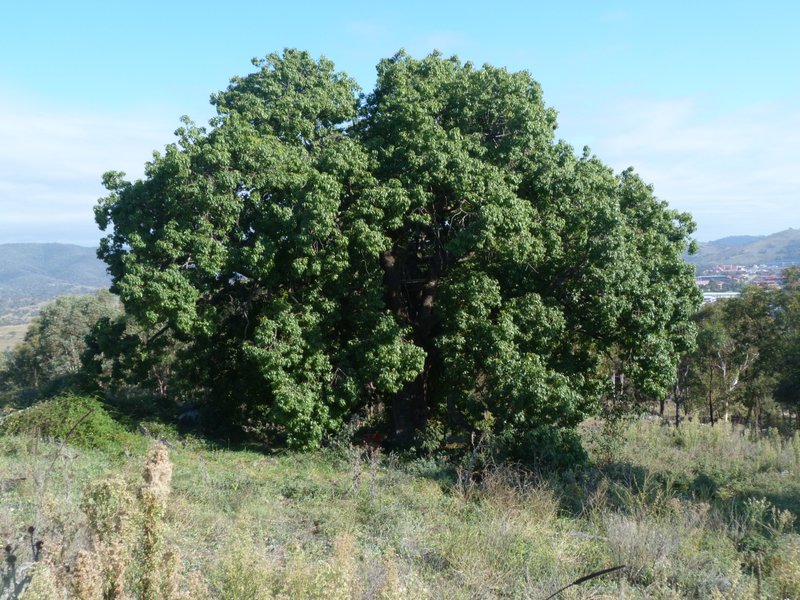
Kurrajong growing naturally on the hills above Tuggeranong. Photo: Ian Fraser.
There is a curious myth that kurrajongs indicate the presence of limestone, but I’m afraid it’s just another piece of interesting folklore. They certainly are found on limestone, and many other rock types, from sandstones to granites to volcanics like Mount Majura, and are plentiful on the deep soils of the southwest slopes of NSW.
The similarity of the name kurrajong to the subject of last month’s column, currawongs, is another coincidence. The origin of the name is a complex one, and not for the first or last time we utterly misunderstood what Indigenous Australians were telling us.
The word – apparently from the Sydney language group – referred to the valuable fibres obtained from various plant species, particularly that of a native hibiscus. It came to be applied to the plant and then to pimeleas or rice flowers, and the tree we now call kurrajong, all of which also had such fibres.
These fibres came from the under-bark, especially of the roots, and were used to make cords and nets. The tree also provided edible seeds from the ‘boat’ seedpods, though it was necessary to winnow out the stinging hairs surrounding them. When roasted and steeped in boiling water, I am told that these seeds make an agreeable brew, but I’ve not experimented, not least because of those stinging hairs!
However, the most imaginative use we’ve managed to put them to – apart from quite properly admiring them – is to lop the branches to provide stock food in drought.

Kurrajong seed pods, which formed boats in May Gibbs’ beloved Snugglepot and Cuddlepie series. Photo: Ian Fraser.
The relish with which sheep and cattle eat them can be seen in the kurrajongs left in paddocks on the plains to the west of here, where the foliage is eaten up as high as they can reach. On a fence line, however, the leaves outside the fence grow down almost to ground level.
On the plus side, this means that kurrajongs are often left in paddocks where most other trees have been removed.
Further afield, there are another 30 close kurrajong relatives, all of them Australian, and some of which we’re likely to encounter when we travel.
The most familiar of these is probably the bizarrely shaped and aptly-named Queensland Bottle Tree, common across the inland plains of Queensland, on the route many of us take when heading for the tropics. These are sometimes confused with the Kimberley’s fabulous Baobabs (or Boabs) but are not related.
Another is the beautiful Illawarra Flame Tree of the Illawarra rainforests, though here, too, there is often a mix-up with the red-flowered South American Coral Trees that grow profusely in the paddocks.
And if you like kurrajongs as much as I do, the good news is that they grow readily in Canberra. Our small front and back yards host a kurrajong and bottle tree, respectively, and both appear very content indeed.
Kurrajongs rock!
Ian Fraser is a Canberra naturalist, conservationist and author. He has written on all aspects of natural history, advised the ACT Government on biodiversity and published multiple guides to the region’s flora and fauna.
Original Article published by Ian Fraser on The RiotACT.







